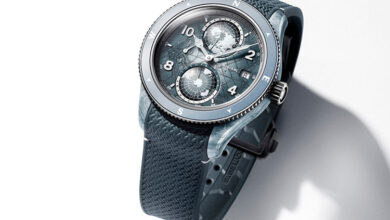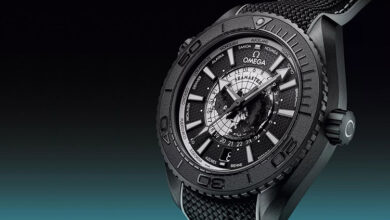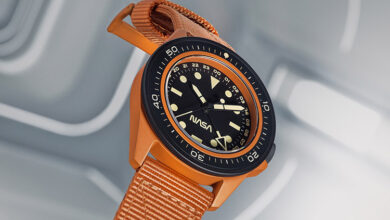
Hublot has offered its aficionados an opportunity to Act with Hublot to conserve rhinoceroses, a biodiversity emergency through its new watch – the Big Bang Unico SORAI
Two-thirds of rhinoceros species may disappear in our lifetime – an irreversible loss for our planet; and its main cause is poaching. Hublot has committed to a partnership with Kevin Pietersen and SORAI – Save Our Rhino Africa India – to conserve rhinoceroses threatened with extinction.
This commitment takes the form of the Big Bang Unico SORAI, from which a large proportion of the funds raised from sales will be directly paid to Care for Wild for the care and conservation of orphaned baby rhinoceroses, and to the South African National Parks agency to reinforce their nocturnal surveillance capabilities using airborne thermal intelligence tools.
Big Bang Unico SORAI
The 45-mm ceramic dial of this watch has donned the sandy tones of the African bush and houses the image of a white rhinoceros. Strapped onto a matching NATO bracelet, the Big Bang Unico SORAI can express its commitment with personality by adopting the camouflage style of the second bracelet, made of rubber. The selective vulcanisation technology produces motifs in long-lasting colours that are perfectly drawn with an accuracy of a tenth of a millimetre, a first in the watchmaking world. This timepiece will be released as a special edition of 100 models.
Care for Wild
The largest rhino orphanage and sanctuary in the world, Care for Wild – founded in 2001 by Petronel Nieuwoudt – aims to ensure the continued existence of these species. An orphaned baby rhinoceros that is left alone because its parents have been killed by poachers has virtually no chance of survival. Care for Wild ensures their protection, growth and well-being in secured environments that are equipped with 24/7 video surveillance and communication networks, watched over by mobile units, dogs and their masters who are trained to counter poachers, and with aerial support.
South African National Parks
This body created in 1926 manages the 19 national parks in South Africa, including the majestic Kruger National Park, with its 20,000 sqkm of forest where animals roam freely. With the funds obtained, South African National Parks will be able to acquire nocturnal airborne thermal intelligence technology – an additional and efficient means to fight against poaching. Its teams will thus be able to localise rhinoceroses, intervene more rapidly, and protect the greatest number of these mammals that are sought after for their invaluable horns.







